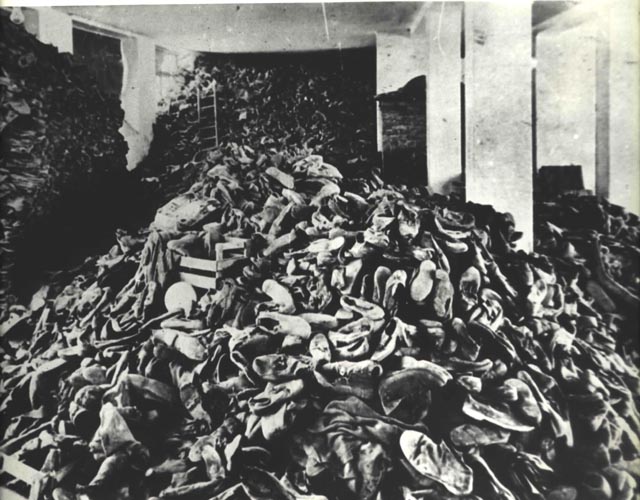The Footprints for Hope Project
"All the effort that went into the making of the “Footprints for Hope" film and educational materials that help students identify with the shoes of children who were killed in the Shoah is so very moving and meaningful. The educational value and dissemination of these historical facts to future generations is of primary importance"
Gloria Landy, Coordinator of the informal Jewish NGO Caucus at the United Nations
The Footprints for Hope Project is a new initiative designed to bring the United Nations information centres and local schools together to involve students aged 13 years and older in the study of the Holocaust. The educational materials include a lesson plan, a power point presentation and a film that centre around one of the most painful graphic images from the Holocaust, the shoes of the victims who perished in Nazi death camps. Following this lesson, the students will draw inspiration for a more hopeful future by creating colourful art out of used footwear.
The aim of this activity is to further
the students’ understanding of the Holocaust and encourage respect for
human rights and the dignity and worth of every person.
The DVD is now available in all UN official languages (subtitles).
How the Footprints for Hope Project works:
The idea behind the Footprints for Hope Project is to stimulate interest amongst the students to learn more about the Holocaust. Through an activity and discussion built around an everyday "ordinary" item that is a necessity to all people, the students can better connect with the victims and their stories.
Lesson Plans
Lesson Plan: "Ordinary Things? Discovering theHolocaust through
historical artefacts"
[PDF
DOCUMENT 249 KB]
PowerPoint Presentation: "Ordinary Things?
Discovering the Holocaust through historical artefacts"
[PPT
DOCUMENT 1 MB]
(Save the presentation on your computer to view teaching notes. Please note: this is a read-only file).
The discussion may shift from past history to current acts of discrimination and violence. Students can examine their role in helping to prevent racism and prejudice from spreading in their communities, while exploring their common humanity. The project concludes with an element of hope, symbolized by the painting of ordinary footwear with vivid colours, representing a brighter future. This is both an individual and group activity, which enables each student to do his or her part to symbolically improve the group's immediate surroundings.
The learning activity thus has two important elements- students explore the history of the Holocaust through a meaningful discussion of an historical artefact, a child’s shoe found at Auschwitz-Birkenau and then, through self-expression, the students are empowered to effect positive change through art.
A short educational film, "Footprints: Discovering the Holocaust through Historical Artefacts" accompanies these activities, and is intended to support teachers in preparing for the "Ordinary Things" activity and for pupils to watch at the end of their lesson and as inspiration for their creative, artistic response.
Credits
Educational materials for the Footprints for Hope
project were created by: Paul Salmons, Head of Curriculum Development,
Holocaust Education Development Programme, Institute of Education,
University of London, which aims to provide a research-informed,
innovative and nationally coordinated programme to help teachers teach
about the Holocaust effectively. The principal focus is on developing a
national programme of professional development in Holocaust education
that will be offered free of charge to teachers in every secondary
school in England.
The Holocaust Centre is the United Kingdom's only dedicated Holocaust memorial and education centre. Founded by Dr.'s Stephen and James Smith in 1995, the Centre welcomes thousands of visitors each year. In September 2008, the Centre launched 'The Journey', the first dedicated holocaust education centre for primary school children.
Photography of the footwear that serves as the focus for the lesson on the Holocaust was provided courtesy of Olivia Hemingway. The shoe is part of the Collections of the Imperial War Museum London. The video for educators was produced by Cornelia Reetz, United Kingdom Holocaust Centre, Nottinghamshire.



